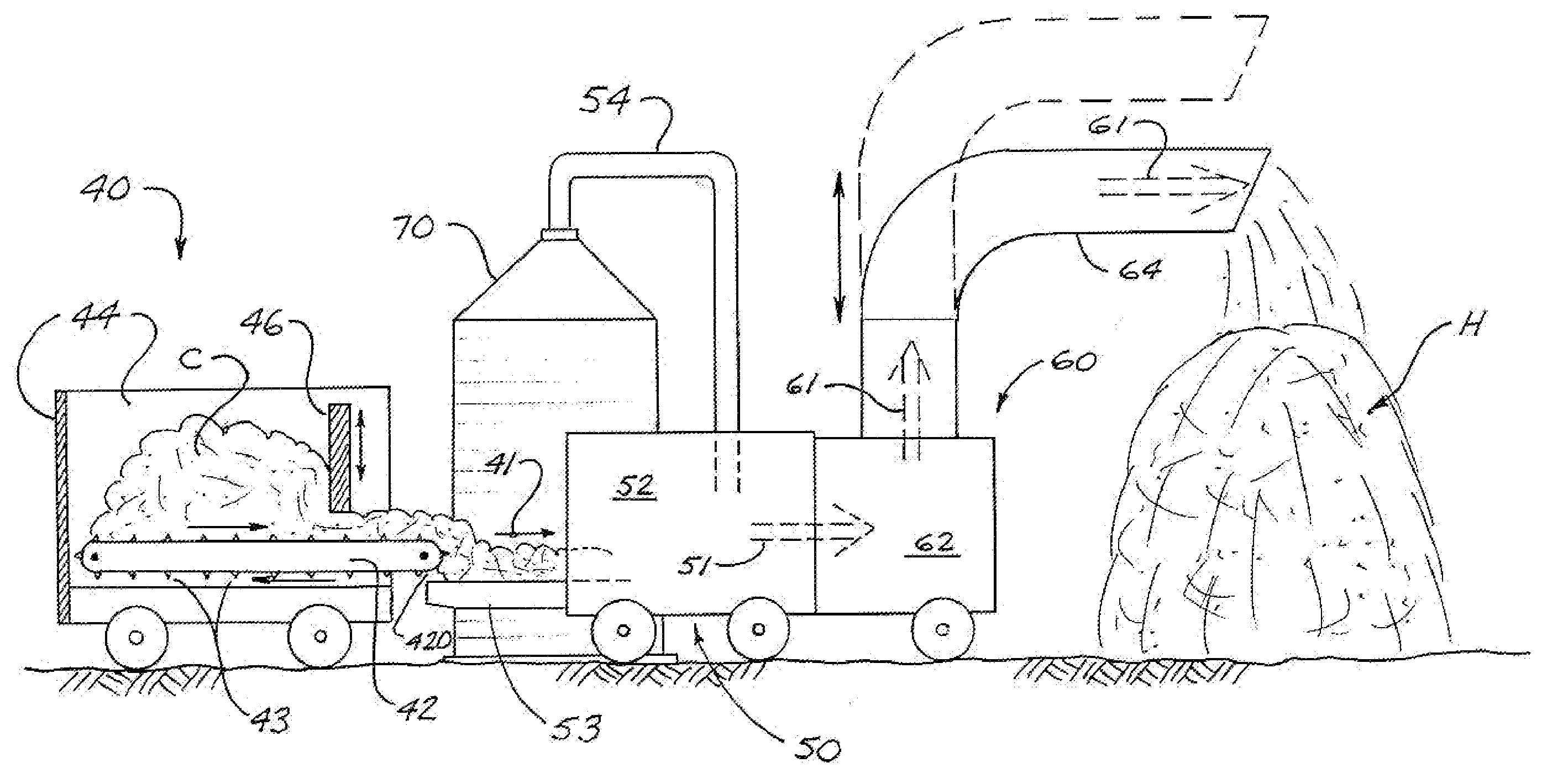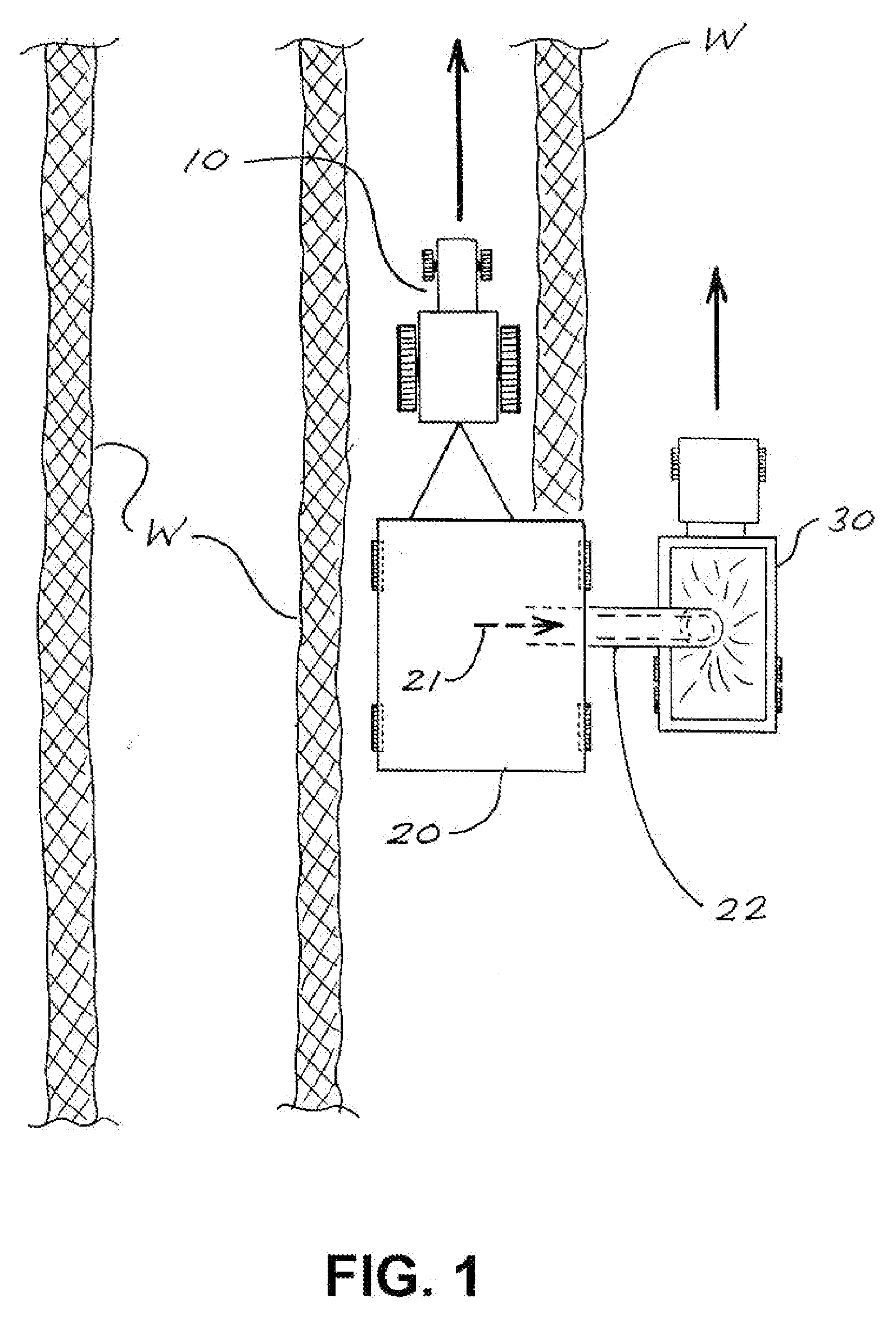Crop processing method and apparatus
a technology for processing methods and equipment, applied in lighting and heating equipment, threshers, drying solid materials, etc., can solve the problems of deterioration in the quality and condition of plant stalks in the field, delay the step of trucking bales, and still need for separate field operations, so as to reduce the requirements of operator machinery, facilitate the construction of feed stacks, and reduce the effect of machinery cos
- Summary
- Abstract
- Description
- Claims
- Application Information
AI Technical Summary
Benefits of technology
Problems solved by technology
Method used
Image
Examples
Embodiment Construction
[0036]FIG. 1 schematically illustrates, in plan view, a farm field with a swathed crop in windrows W, are being collected in accordance with an initial step of one embodiment of the method of the invention. A tractor 10 pulls a pull-type harvester 20 which picks up the swathed crop and discharges it (as conceptually indicated by flow arrow 21 and discharge chute 22) into a field truck 30, which will in turn transport the crop to a processing facility in accordance with the invention. Numerous readily-available implements could be used as harvester 20; one example would be a pull-type forage harvester or pickup head as manufactured by the John Deere® company. In alternative embodiments, a self-propelled harvester could be used instead of a tractor / pull-type harvester combination.
[0037]FIGS. 2 and 3 illustrate a crop-processing facility in accordance with a preferred embodiment of the apparatus of the invention. In this embodiment, the facility includes a wheel-mounted crop unloading ...
PUM
 Login to View More
Login to View More Abstract
Description
Claims
Application Information
 Login to View More
Login to View More - R&D
- Intellectual Property
- Life Sciences
- Materials
- Tech Scout
- Unparalleled Data Quality
- Higher Quality Content
- 60% Fewer Hallucinations
Browse by: Latest US Patents, China's latest patents, Technical Efficacy Thesaurus, Application Domain, Technology Topic, Popular Technical Reports.
© 2025 PatSnap. All rights reserved.Legal|Privacy policy|Modern Slavery Act Transparency Statement|Sitemap|About US| Contact US: help@patsnap.com



